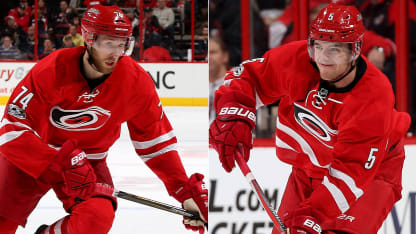In last season's Stanley Cup Playoffs, the Nashville Predators demonstrated the value of having young, effective and salary cap-efficient defensemen. Based on the Hurricanes' numbers, they could be the next team to follow suit.
The average age of Carolina's top seven defensemen -- Justin Faulk, Jaccob Slavin, Brett Pesce, Noah Hanifin, Klas Dahlbeck, Trevor van Riemsdyk and Haydn Fleury -- is 23.6 years old. And, according to the data compiled at NHL Numbers, the Hurricanes have $10.133 million in salary cap space assigned to their defensemen, which is the lowest in the League.
The defensemen are already showing signs of future effectiveness. Last season, the Hurricanes outshot opponents 1,411-1,198 with Pesce on the ice at 5-on-5, an SAT of plus-213 that ranked 12th among NHL defensemen. Slavin ranked 20th at plus-161, and Faulk ranked 35th at plus-111, making Carolina one of five teams with at least three defensemen with an SAT of plus-100 or better.

